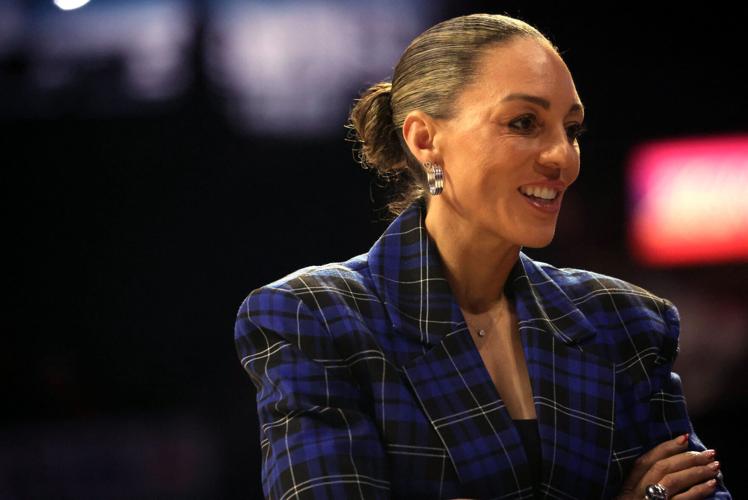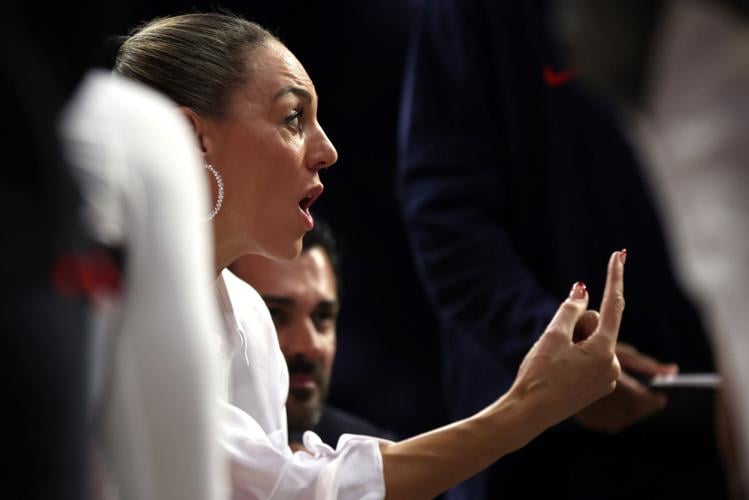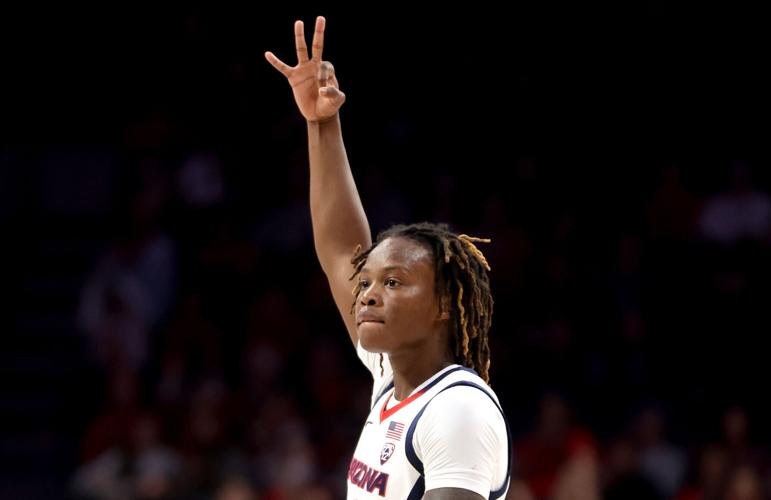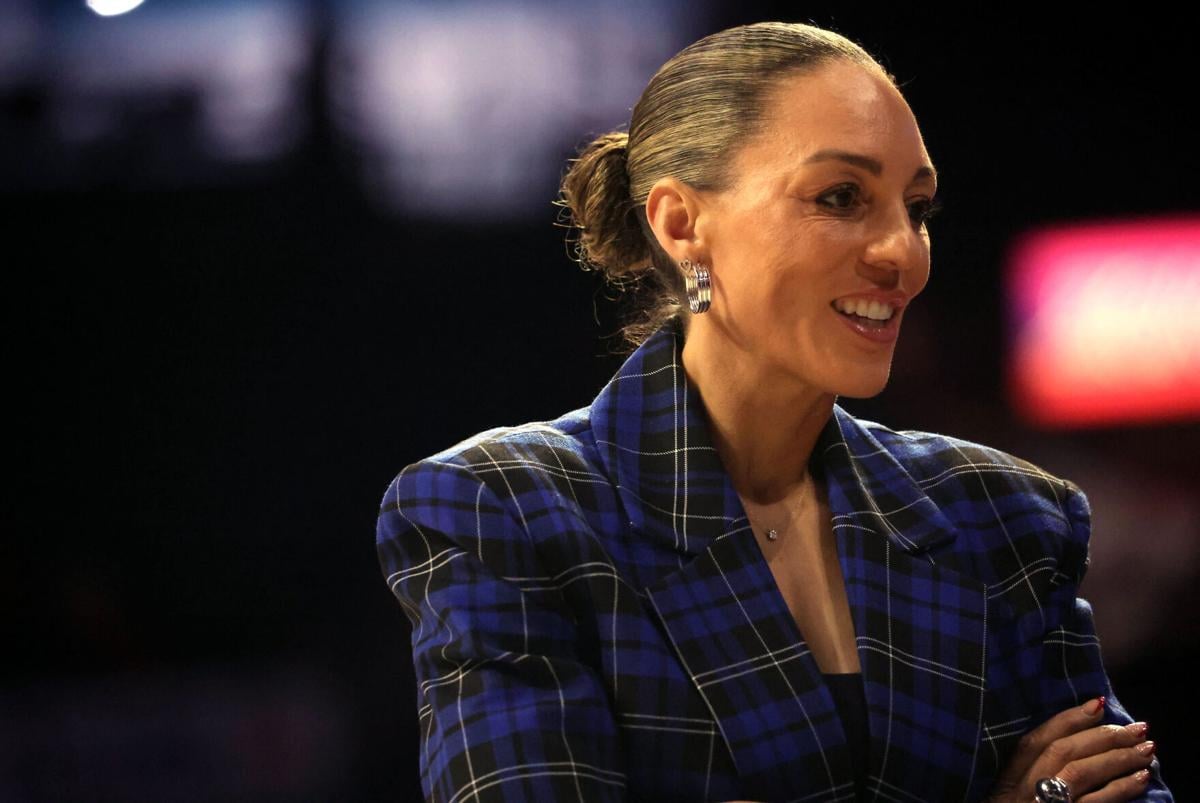This is all part of the plan — ideally.
This will help the Wildcats in the long run — hopefully.
This too shall pass — theoretically.
Adia Barnes and her program find themselves in a peculiar place today.

Michael Lev is a senior writer/columnist for the Arizona Daily Star, Tucson.com and The Wildcaster.
She has raised the standard for what Arizona women’s basketball can be during her eight-plus seasons as head coach.
But she fully acknowledges that expectations need to be lowered this season.
Call it a rebuild, a reset, a recalibration. However you want to label it, this is a transition year for Barnes’ program after three consecutive NCAA Tournament appearances.
The 2023-24 Wildcats lack depth. They lack experience. That’s a difficult combination to overcome.
“In the short term it’s gonna hurt us because we will lose some games,” Barnes said after Arizona’s 88-75 loss to No. 5 Texas on Wednesday night at McKale Center. “I’m hoping in the future it’s gonna benefit us. But it’s just, like, surviving until then.”

Arizona head coach Adia Barnes talks to her Wildcats during a timeout in the fourth quarter Wednesday against Texas at McKale Center. Arizona lost the game, 88-75, but despite a young team featuring a somewhat-depleted roster, played with the No. 5 team in the country tough early, and again late — including going on a 15-1 run in the fourth quarter.
That task became harder this week.
An already thin team got thinner Wednesday when it was revealed that sophomore forward Maya Nnaji had left the team to focus on academics.
That reasonable explanation — Nnaji is a pre-med major, so her academic demands are greater than most — didn’t stop skeptics from speculating that Barnes had lost another player because of a personality conflict or how they fit the team dynamic.
This is what happens when three-fourths of the vaunted 2022 recruiting class is playing elsewhere and many ex-Wildcats are thriving. They include 2021 midyear enrollee Madison Conner, who’s now at TCU and leads the nation in 3-pointers per game. Conner is averaging 5.2 triples per contest. Caitlin Clark, whom you may have heard of, is second at 4.3.
The UA program has lost a ton of talent to the transfer portal in the past two cycles. Barnes hasn’t shied away from the topic. The question is: Is this just the way things are now in college basketball, or is what’s happening to Barnes’ program beyond the norm?
Assuming the Wildcats don’t suffer any additional in-season personnel losses, we won’t know for sure until next offseason. Barnes has put the nucleus in place. Will it stay together?
As for the here and now, Nnaji’s loss is devastating. Arizona had only nine available players Wednesday. Texas lists 15 players on its roster.
The Longhorns used only 10, and two played just three minutes apiece. Most coaches’ rotations run eight- or nine-deep. So what’s the problem then?
Well, before Nnaji’s departure, the Wildcats had little margin for error. Now they have none.
Any significant injuries or foul trouble, and you’re asking players to do more than they might be capable of or are ready for at this stage of their careers.
The Cats’ defense was most effective when they put on a full-court press in the fourth quarter. Can they do that for a full game if they have only nine healthy bodies?
Barnes said practicing five on five has been next to impossible. The male practice players who help the team out won’t be around over winter break. Barnes is constantly conscious of saving players’ legs.
“It impacts everything,” she said. “It impacts our practices significantly.
“I’ve had to shorten practice, which is fine. When you have a team of new and young players, there’s a lot of teaching.
“So less practice, more film, more studying and breakdowns, which is hard because it’s different. It’s uncharted territory for me.”
How did Arizona get into this predicament? Barnes had 12 players coming out of spring. But freshman Montaya Dew — the highest-ranked recruit in UA history, one notch above Nnaji — suffered a season-ending torn ACL in the summer. Things didn’t work out with transfer Fanta Gassama. Then Nnaji left the team.

Arizona guard Kailyn Gilbert (15) gestures after hitting a long rang jumper against Texas in the first quarter of the Wildcats' matchup with No. 5 Texas Wednesday night at McKale Center.
Barnes tried to fill out the back end of the roster with Erin Tack, a javelin thrower on the UA track team. But during her first week of basketball practices, Tack got hurt.
“So that’s just the way it’s going this year,” Barnes said.
As she noted after the game, Arizona started two freshmen and a sophomore against undefeated Texas — and the sophomore, guard Kailyn Gilbert, averaged just 10.6 minutes per game last season. She’s currently at 27.7, second most on the team.
The talent Gilbert possesses is obvious. Likewise the two freshmen, Breya Cunningham and Jada Williams. But it’s unrealistic to expect consistent production from players who are so green.
Gilbert came out hot Wednesday, making 4 of 6 shots in the first quarter. She finished the exact same way, going 4 of 6 in the fourth. In between, she missed all nine shots that she took. Many of them were forced. It appeared she was trying to put the program on her still-slender shoulders.
Gilbert finished with a career-high 26 points, but it was during the second and third quarters that the Longhorns pulled away.

Arizona guard Kailyn Gilbert (15) goes straight at Texas forward Khadija Faye (20) to score in the fourth quarter of the No. 5 Longhorns' 88-75 win over the Wildcats at McKale Center Wednesday. Gilbert has stepped up for Adia Barnes' Wildcats in her sophomore season, averaging nearly 28 minutes per game and leading the Wildcats with 14.3 points per game. And, on a team shooting just 28% from 3-point range, Gilbert his connecting on 45% of her long distance tries.
“I think Kailyn had some really good moments,” Barnes said. “She forced a little sometimes. But then she sat, she settled down and came back better. She wouldn’t have been able to do that last year. So that’s growth.”
Cunningham was the only other Wildcat to score in double figures, finishing with 12 points. She registered all of them in the second half. She had to sit out the final 19-plus minutes of the first after committing two off-ball fouls in the opening 36 seconds.
Consider it another lesson learned.
“Just being smarter on defense,” Cunningham said. “Playing straight up. Just because I need to be in for my team.”
“I used to do stuff like that,” Gilbert conceded, before quickly adding: “I still do stuff like that.”
Barnes expects more “stuff like that” as this season progresses. One of her postgame comments encapsulated how it likely will play out: “There’s some good things from this game — and definitely some teaching moments.”
Given how deep and strong the Pac-12 is — five teams are ranked in the Top 11 in the latest AP poll — Arizona (7-3) might struggle to earn a postseason berth. That’s fine — if it’s a one-off.
Barnes needs to keep the young core intact for all of this season’s struggles to be worthwhile.
“The positive thing from a player’s perspective is you get to play,” Barnes said. “You get to play through mistakes.
“They’re gonna learn a lot this year, and they’ll be way better for it next year.”
Ideally. Hopefully. Theoretically.









